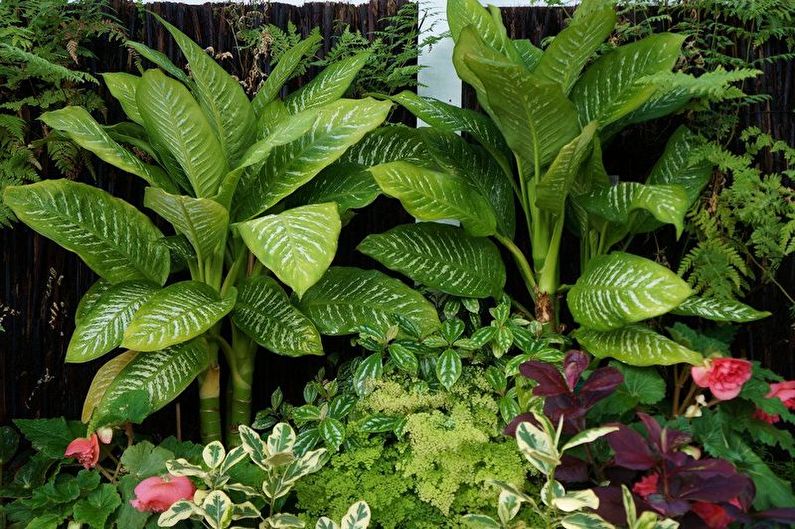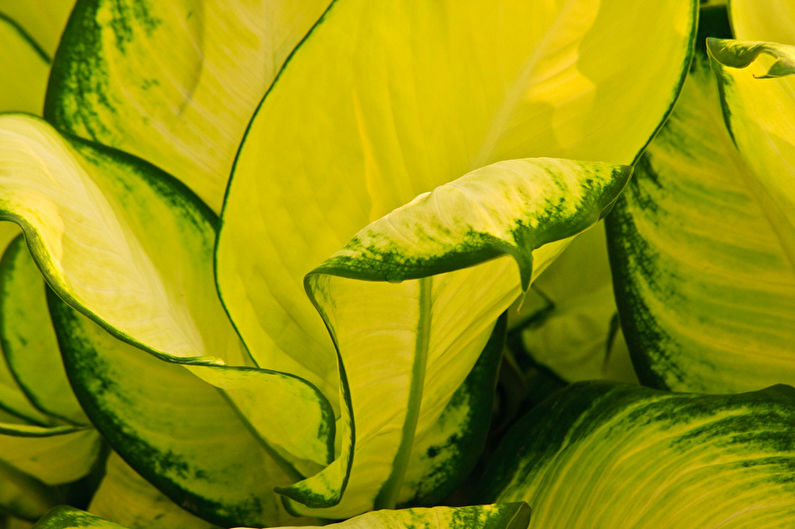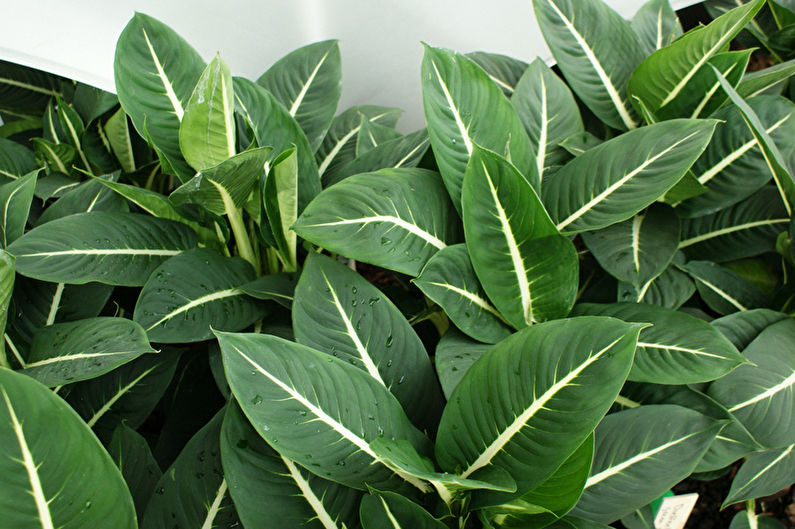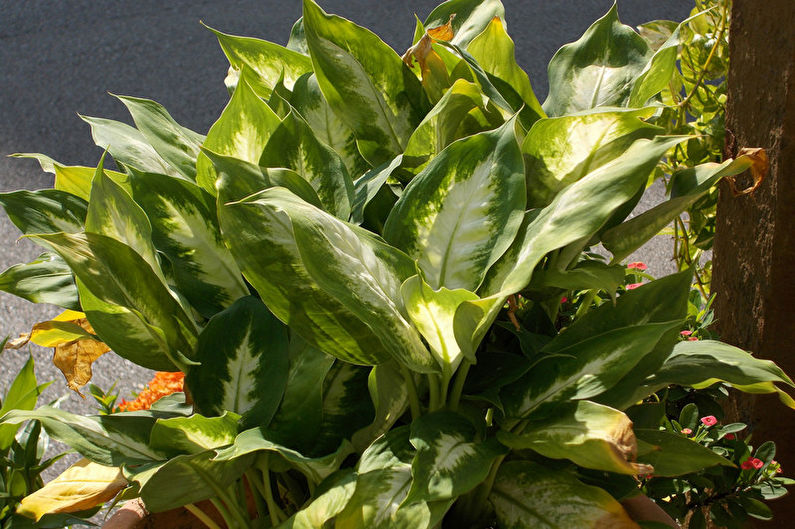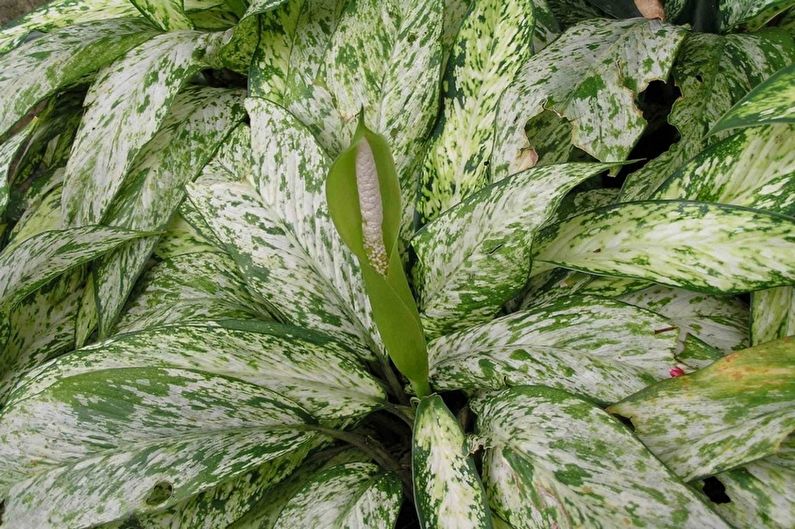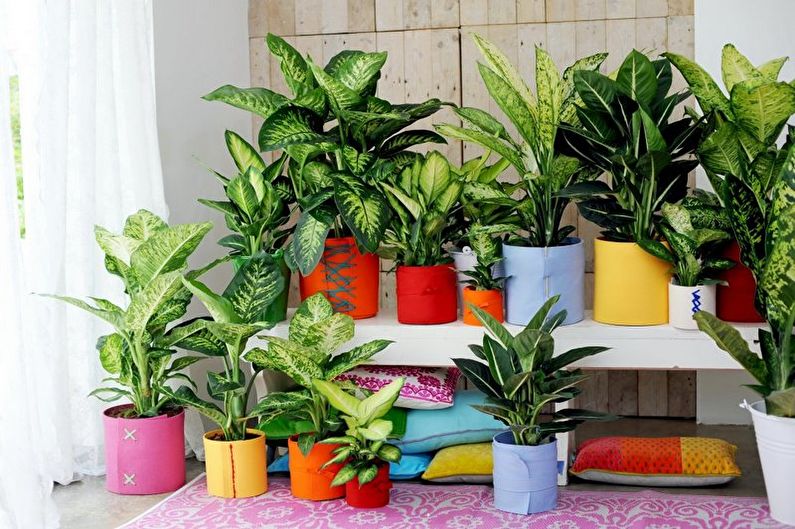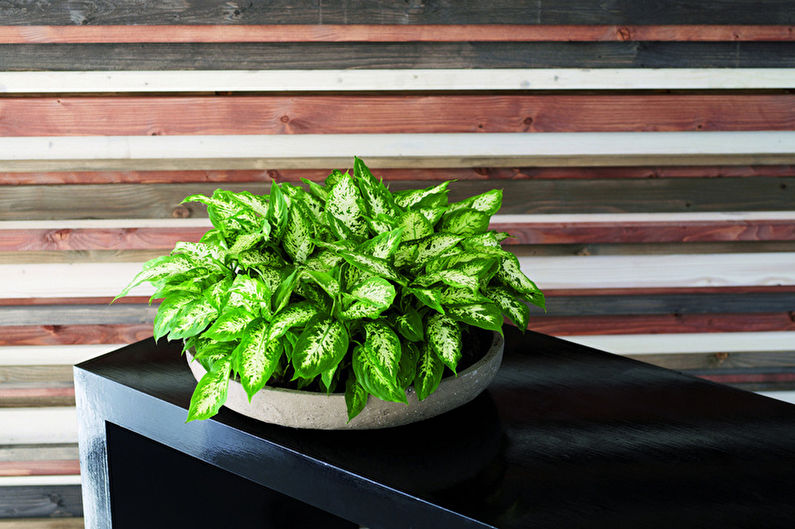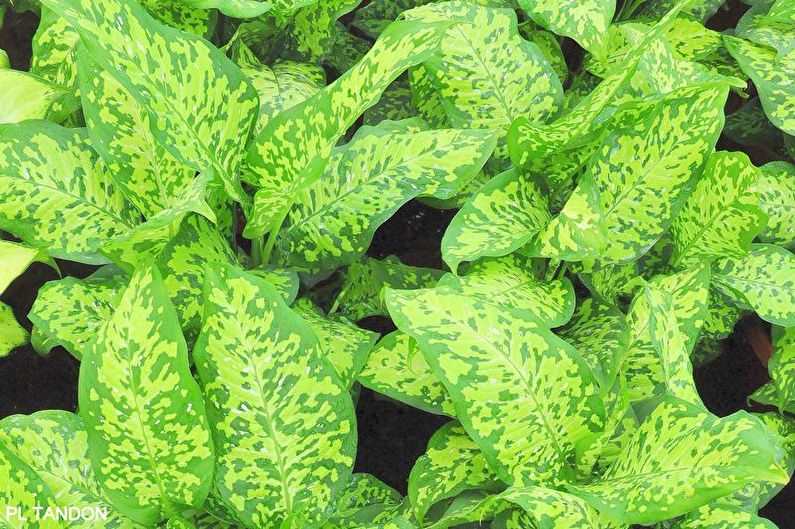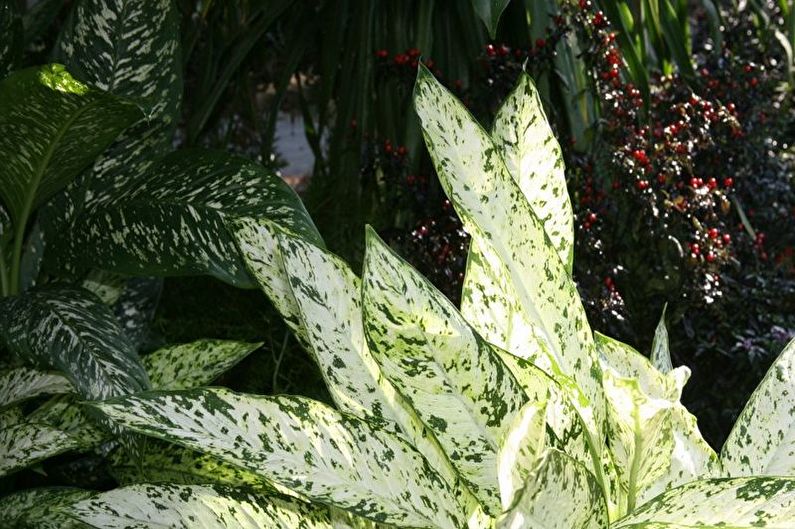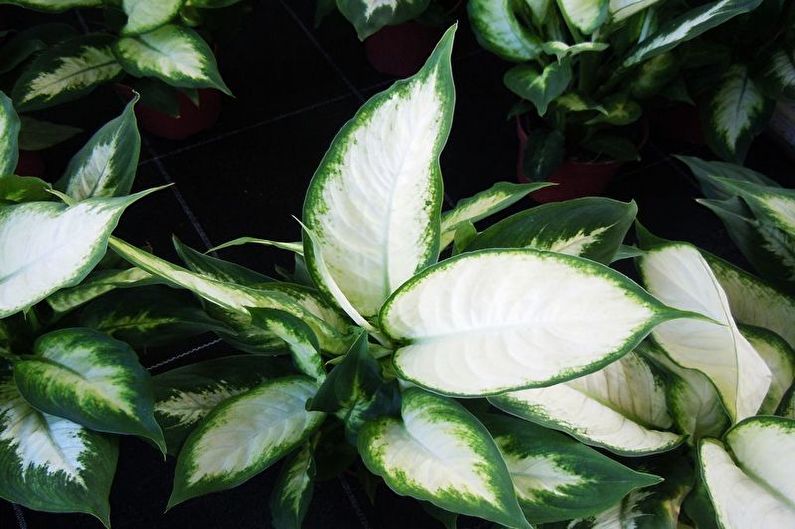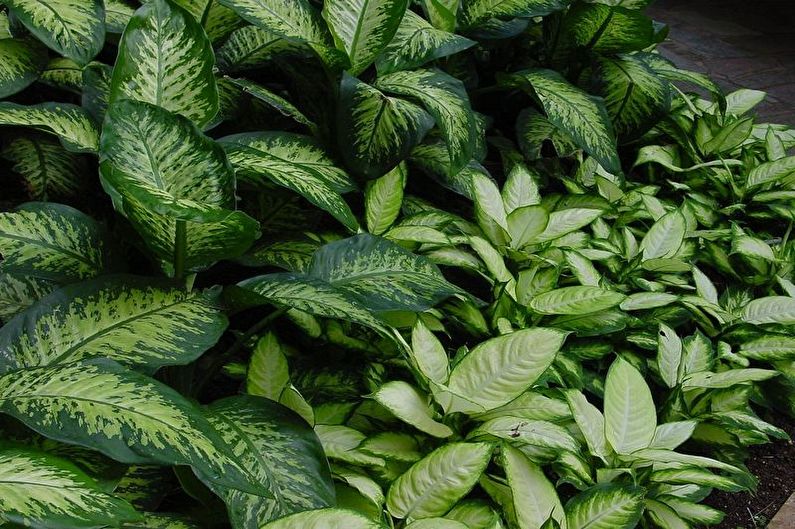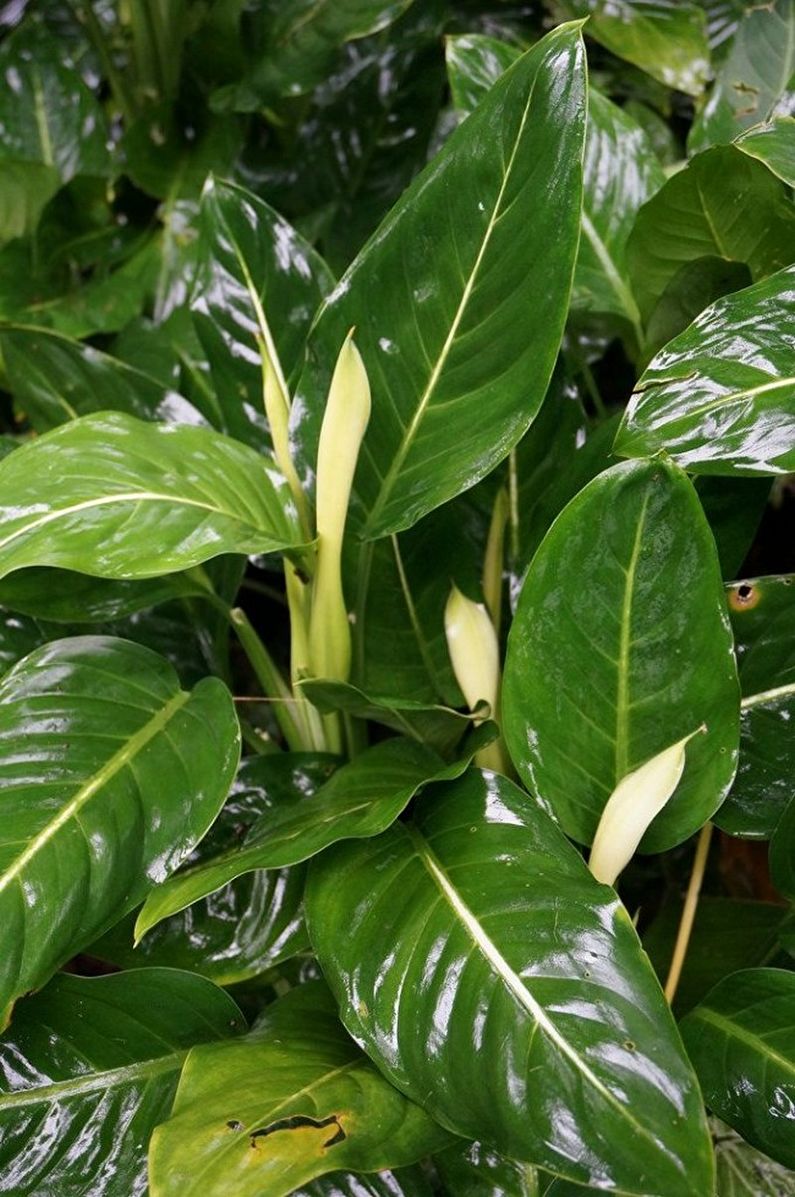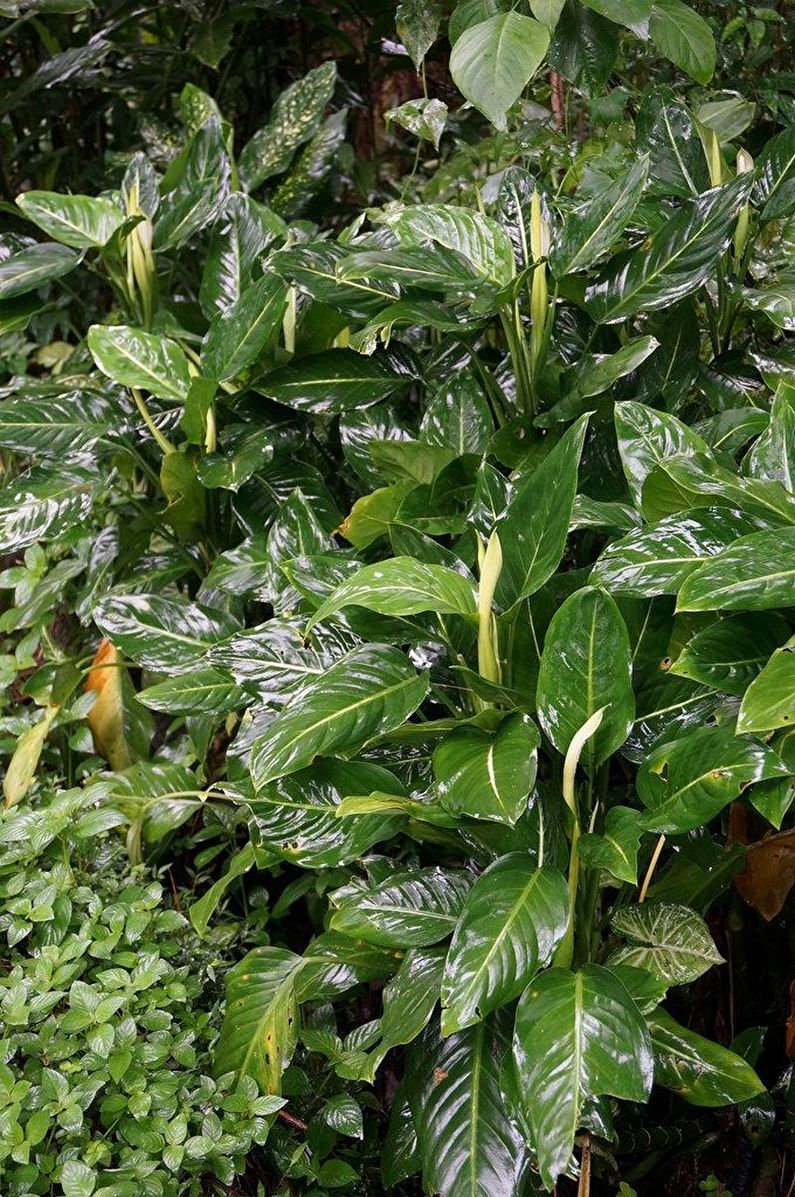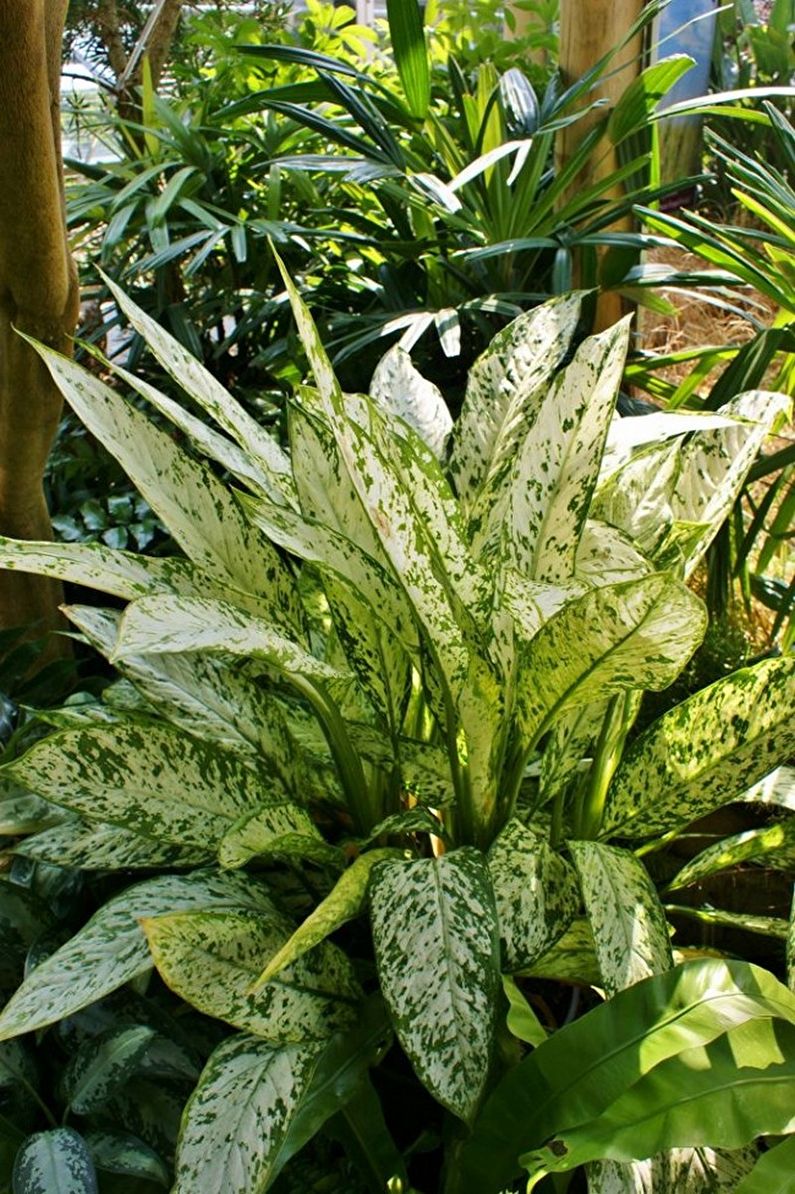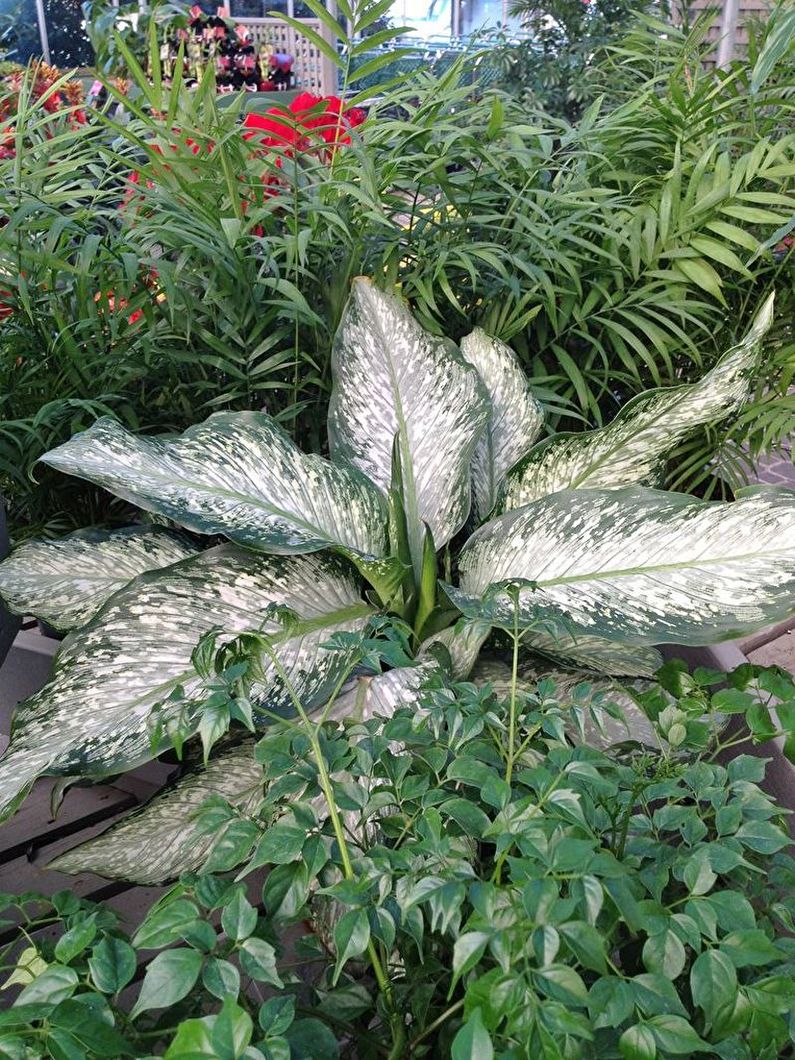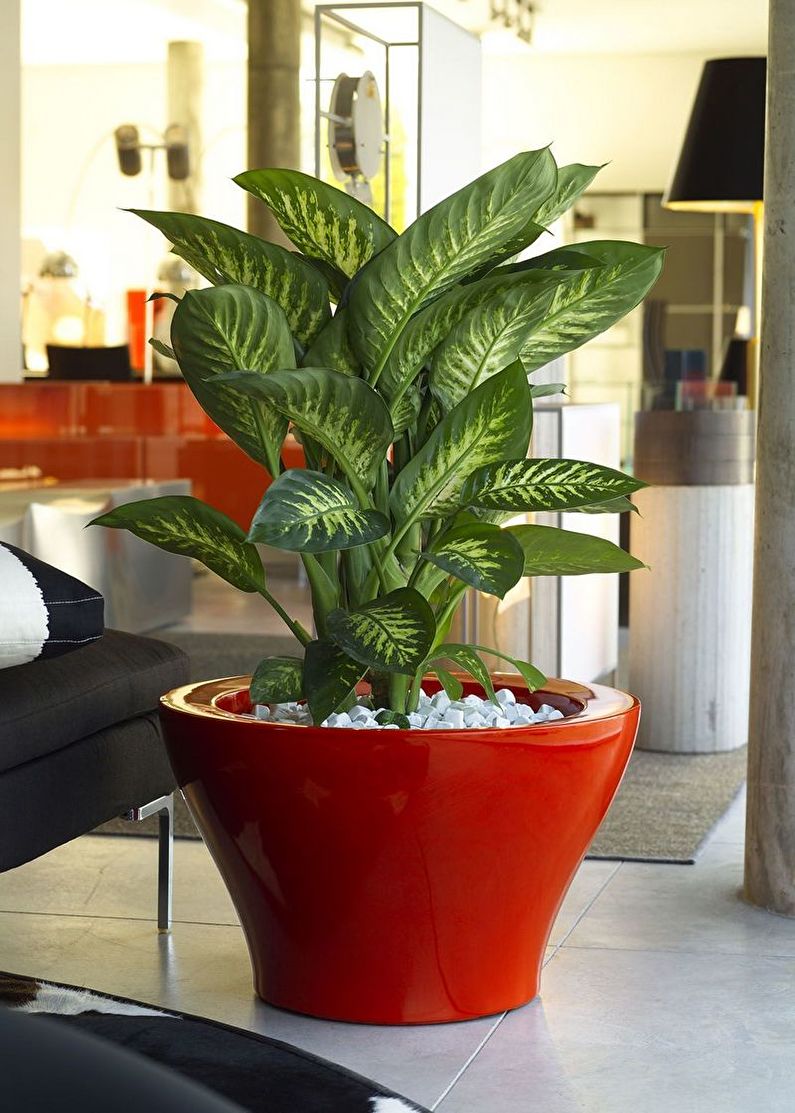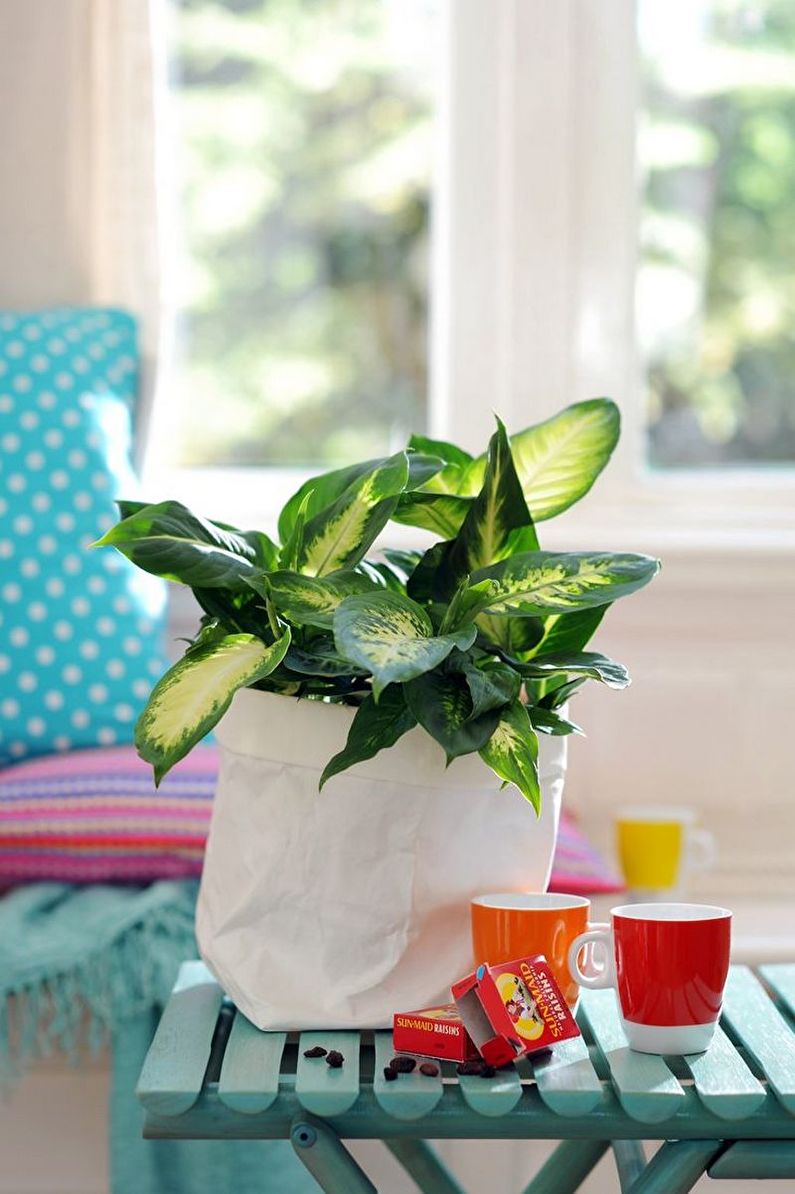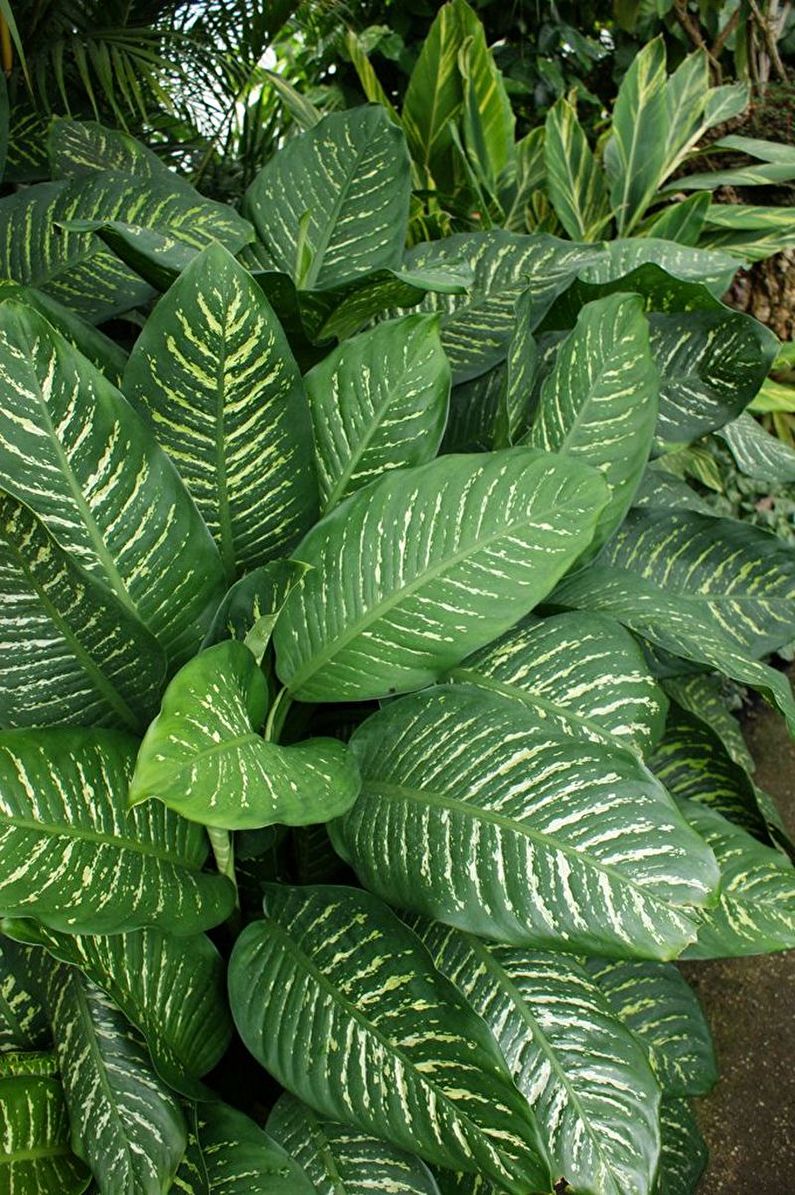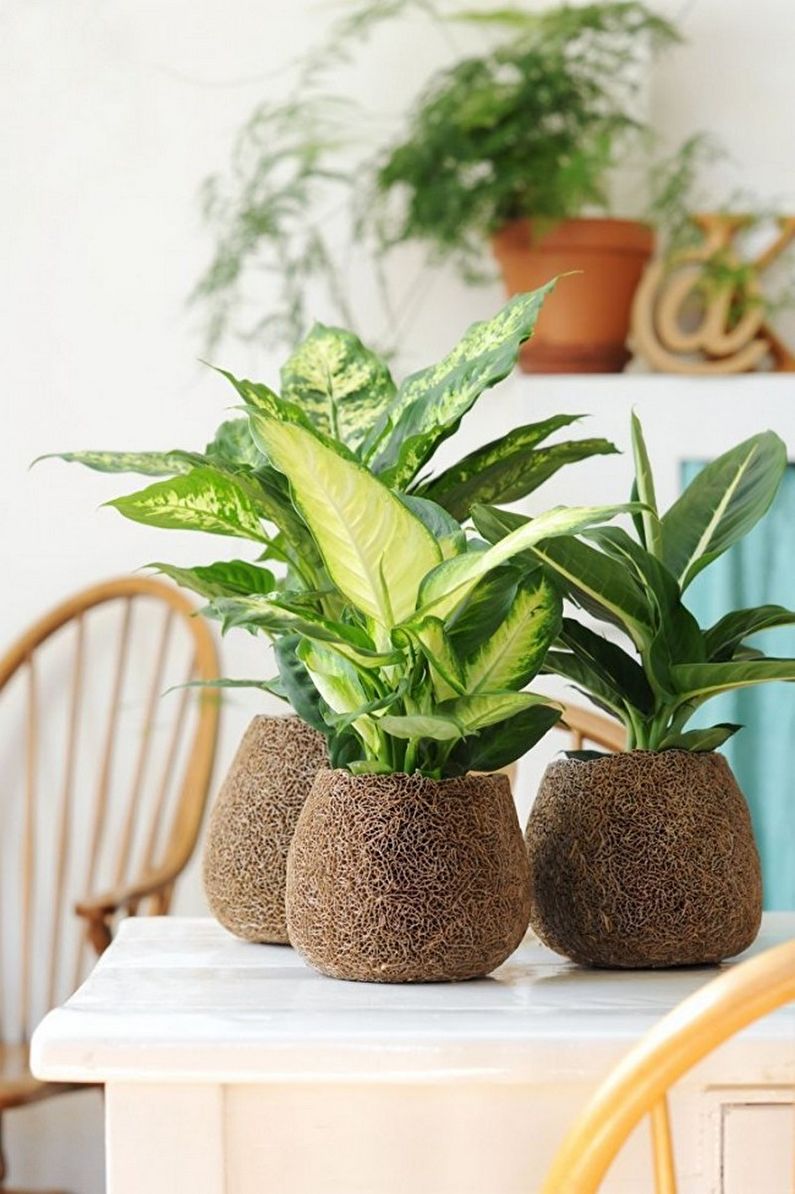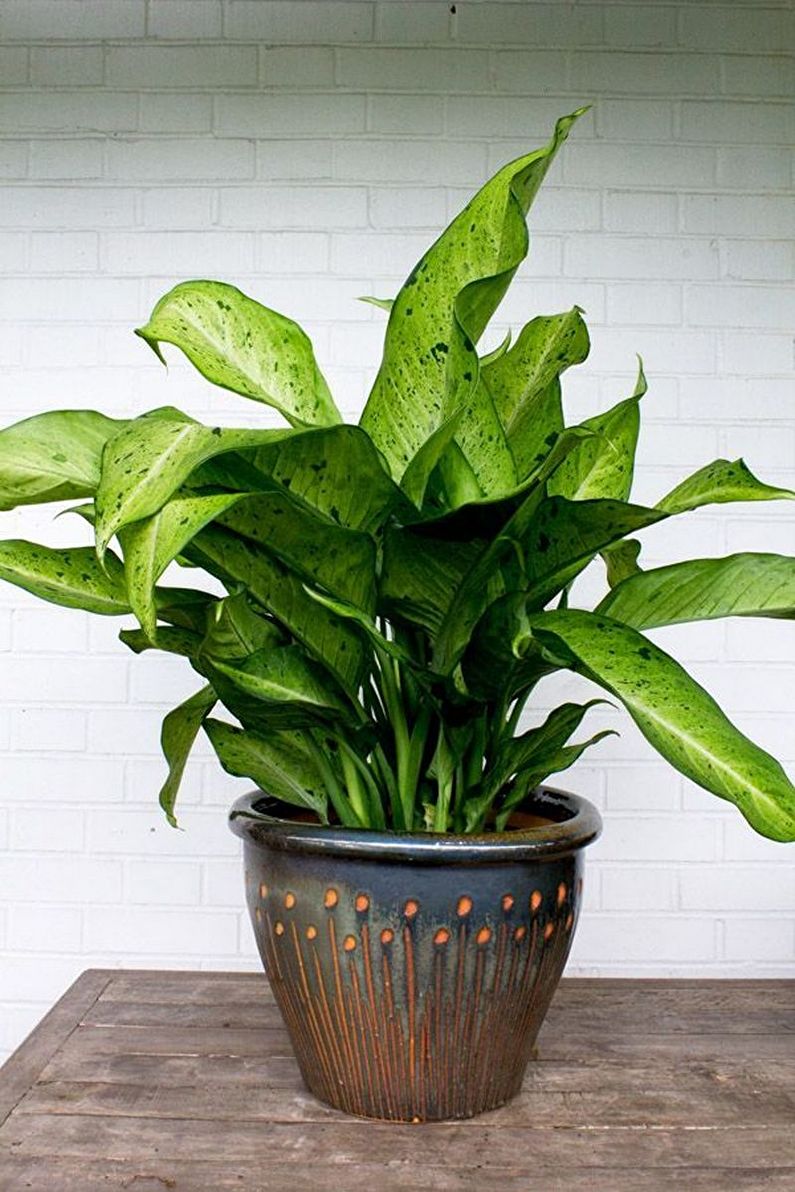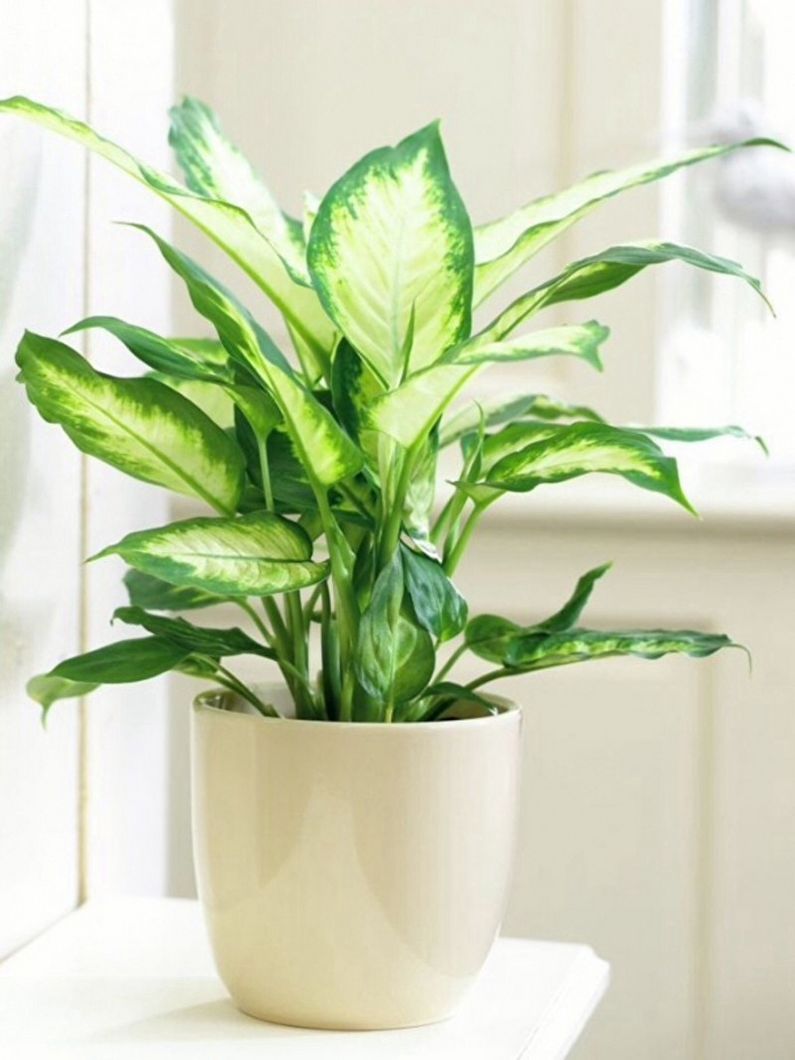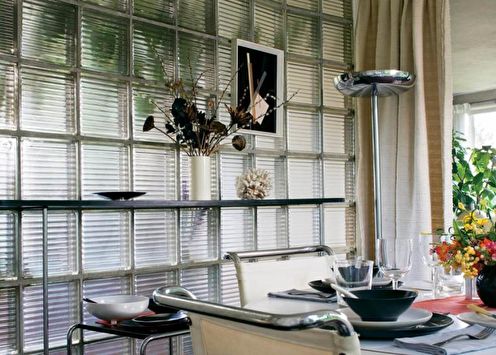
Dieffenbachia is an unusual and rather demanding plant, but very popular in home gardening. There are several reasons for this. This is a beautiful appearance, and the unique properties of a flower to purify indoor air. In order for such an unusual pet to please as long as possible, you need to provide him with proper care. Otherwise, the capricious plant simply cannot prove itself in all its glory.
general characteristics
Dieffenbachia is an evergreen perennial plant known for its large variegated leaves. His homeland is the tropical regions of South America. According to various sources, there are from 30 to 50 varieties. Some of them are able to scrub. The genus is named after the botanist J.F. Dieffenbach.
One of the defining signs of Dieffenbachia is thick, juicy stems with large leaves. Depending on the variety, they can be almost plain, with spots, stripes or streaks. Form - from oval to spear-shaped.
Dieffenbachia grows quickly and, under favorable conditions, grows to 2 m in height. Ideally, new leaves appear every week. As soon as the primordium finally unfolds, inside is the tip of the next.
Tropical plant blooms very rarely. The inflorescence is classic for this genus - an ear in the leaf sinus. Dieffenbachia fruit is a bright orange or red berry. Flowering begins in mid spring. The flower lives only a couple of days, after which it fades. Immediately after this, it must be removed so that it does not pull over most of the internal resources of the plant.

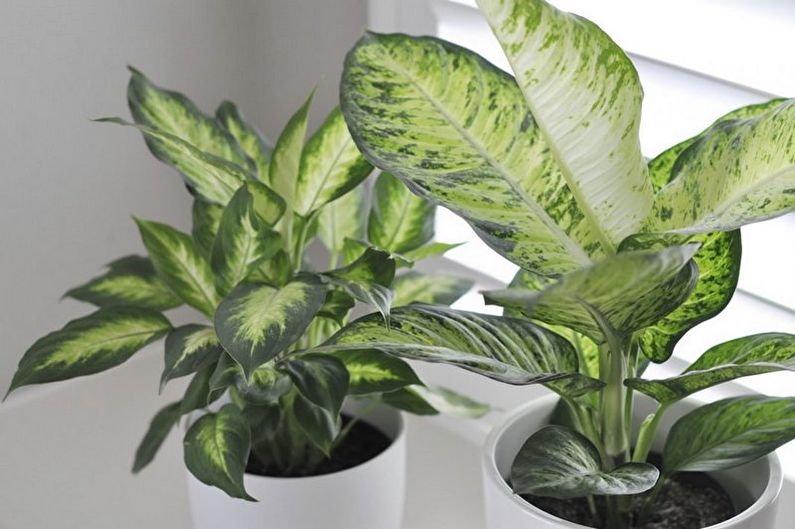
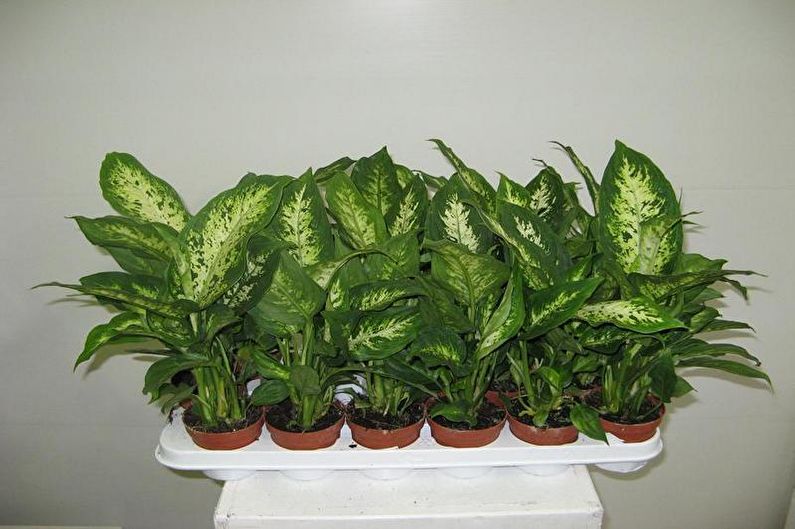
Types of Dieffenbachia
There are many types of Dieffenbachia, but in houses and apartments most of them are found a few.
Dieffenbachia spotted. It has large dark green leaves with a white vein and light cream patches. Based on this variety, a number of decorative forms are artificially bred.
Dieffenbachia is lovely. Ideal for apartments in our latitudes. It tolerates the neighborhood with central heating, is not afraid of shade, and the leaves grow up to 50 cm in length.
Dieffenbachia Seguin. Almost no different from the spotted, not counting the wider and one-color sheet plate. In addition, such dieffenbachia has noticeably fewer lateral veins, about 10.
Dieffenbachia Oersted. The only species with fully green pointed or elongated leaves. Single light spots are rare. The average vein is whitish.
Dieffenbachia Camille. A kind of spotted dieffenbachia of a different color. Almost the entire main part of the leaf is white, but over time it turns a little green.
Dieffenbachia is linear. It features a rounded base of the sheet plate. She has a striped petiole and a dark leaf color with erratic light green spots.
Dieffenbachia Bauze. It has relatively small yellowish-green leaves with dark spots and single white blotches.

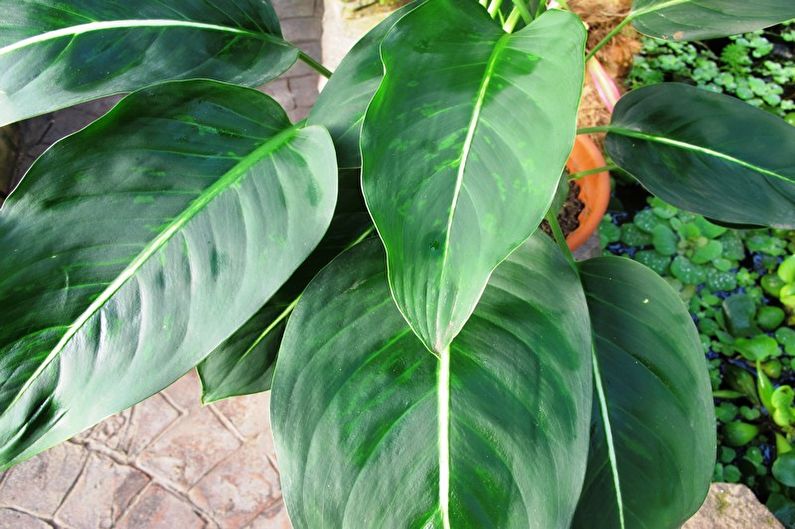
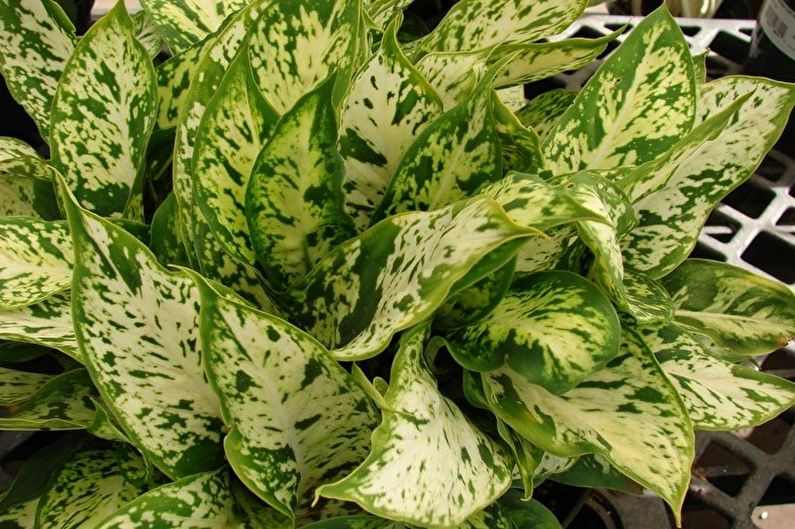
Dieffenbachia care
Dieffenbachia is a plant from the humid tropics; therefore, it requires appropriate conditions: temperature and humidity. If he lacks light or heat, the leaves turn yellow. If there is not enough moisture, they dry up almost immediately. But at the same time, temperature and humidity conditions are the main need of Dieffenbachia. She does not cause any more trouble.
Seat selection
A motley and bright plant is very photophilous. The more intense the color, the more light the flower needs. But direct sunlight is dangerous for him. The best solution: a window sill at the south window with a special partition or tulle to diffuse light. Be sure to avoid drafts, because cold air currents are harmful to the flower.During ventilation, dieffenbachia is better to rearrange.
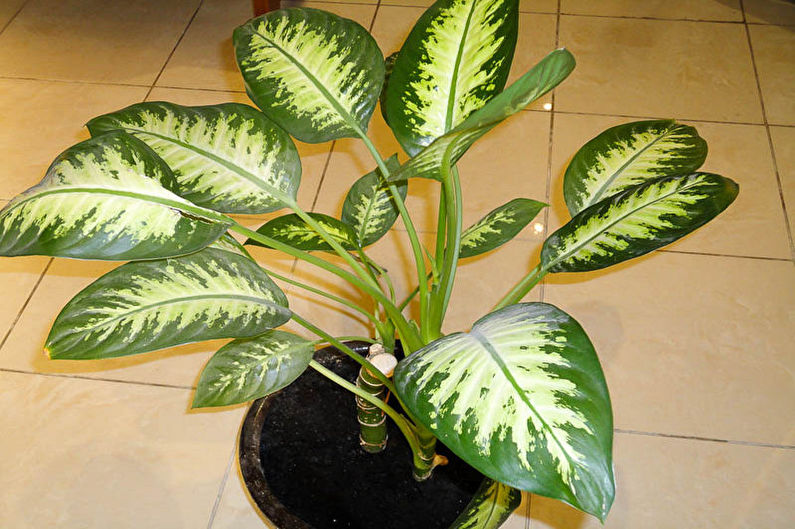
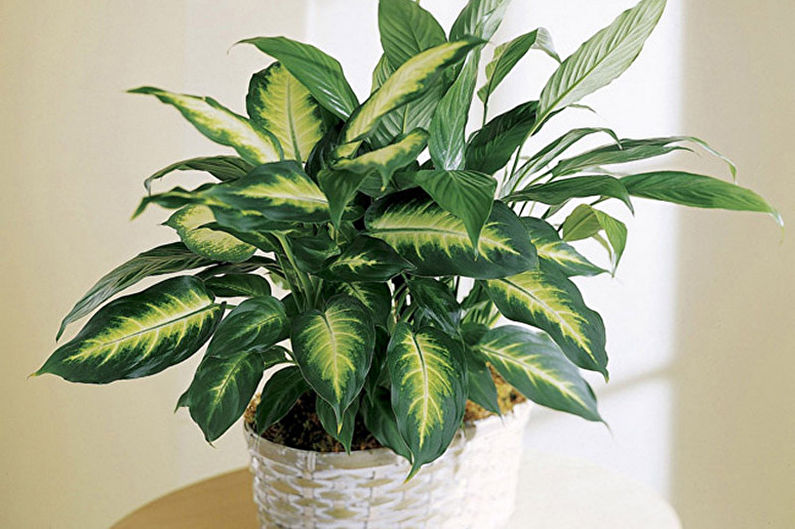
Safety
When choosing Dieffenbachia for the home, you need to consider one important nuance: the juice of the plant is quite toxic. It causes irritation or allergies in contact with skin or mucous membranes. In no case should you take it in your mouth. In some regions, Dieffenbachia is even used instead of rodent venom. Place the plant where children or animals cannot reach it. It is better to work with him with gloves, and then wash your hands thoroughly with soap and water.
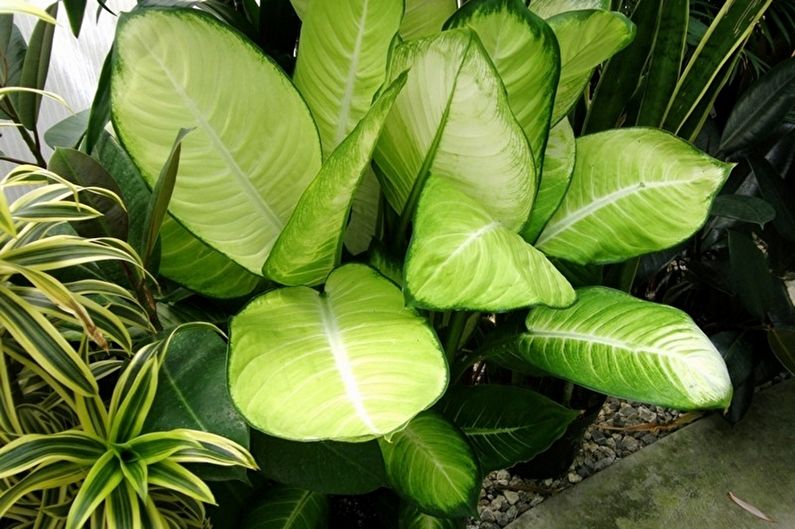
Temperature
Dieffenbachia does not survive at temperatures below + 10C. She almost instantly withers and flies around. Ideal temperature is about + 20C. The plant tolerates heat better than cold. With sufficient humidity, even + 30 ° ... + 35C is not a problem.
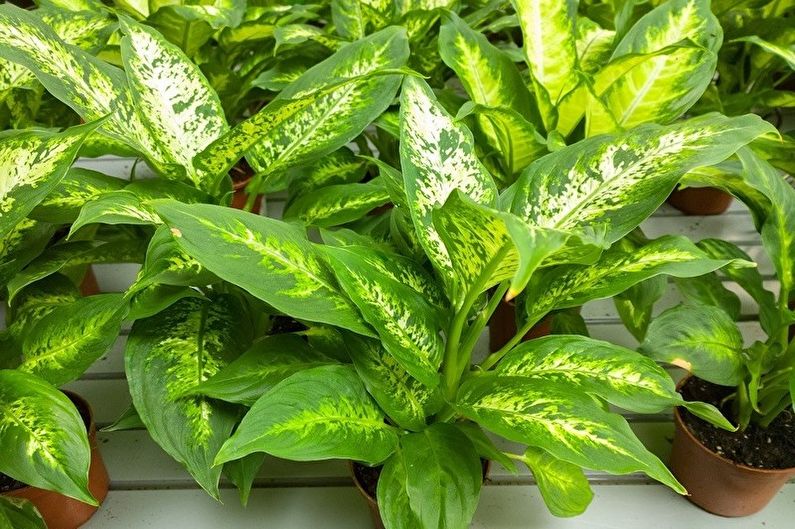
Watering
A tropical flower loves moisture, but any extreme is fatal to it. During the year, it’s enough to keep the land in the flowerpot a little moist, but in winter, the frequency of watering is reduced by 2-3 times. At this time, the flower almost does not grow and does not develop, therefore it does not require so many resources. It is not recommended to use tap water for irrigation. It has a lot of lime that Dieffenbachia does not tolerate. Therefore, the water must first settle, and before use, leave it in a warm place so that it warms up to room temperature. Do not water the flowerpot with cold water - this gives the same fatal drop.
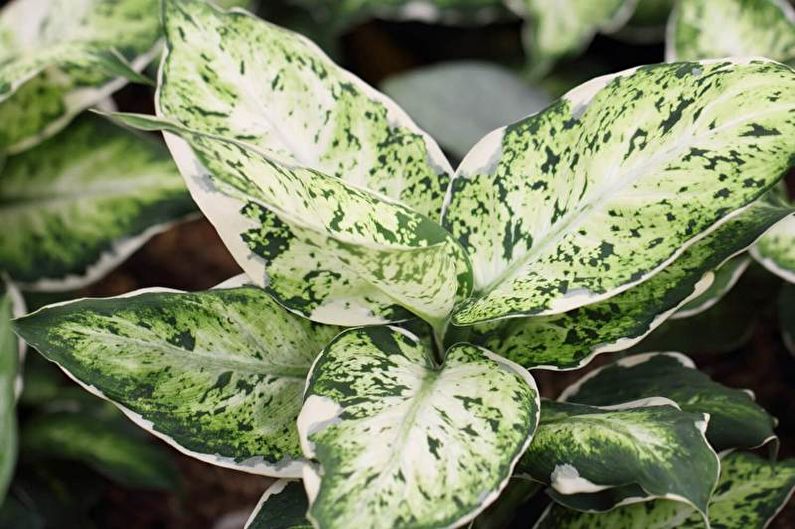
Irrigation
Besides watering, Dieffenbachia loves irrigation and bathtubs. Once a week, a flower can be safely showered, after covering the soil with a film. Periodically wipe the leaves with a damp cloth or spray from a spray bottle. In winter, when the issue of moisture is especially acute, you can leave the flowerpot in a pan with water and moss or special aggregates to hold moisture.
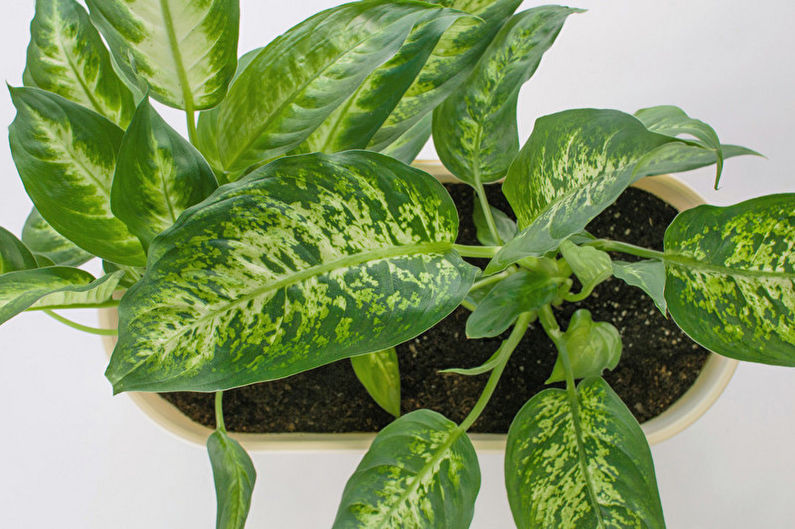
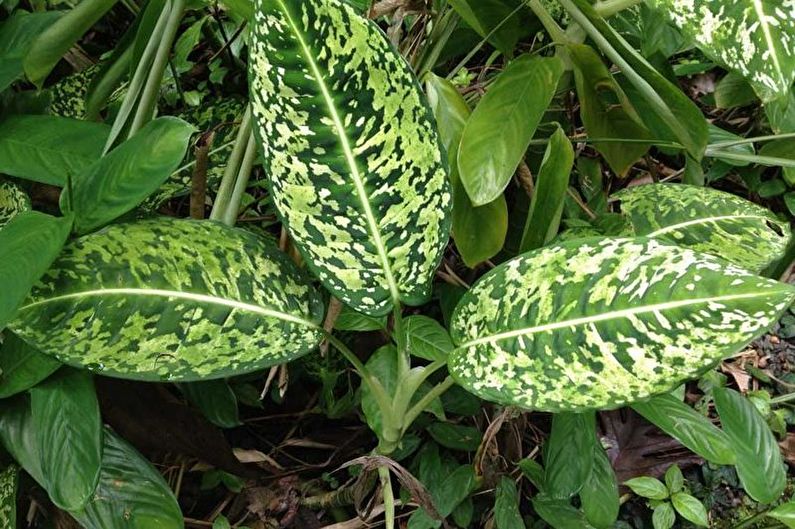
Top dressing
From spring to autumn, the stage of active growth lasts. At this time, it is useful to feed the plant with special mineral fertilizers. In winter, it should take a break from supplements.
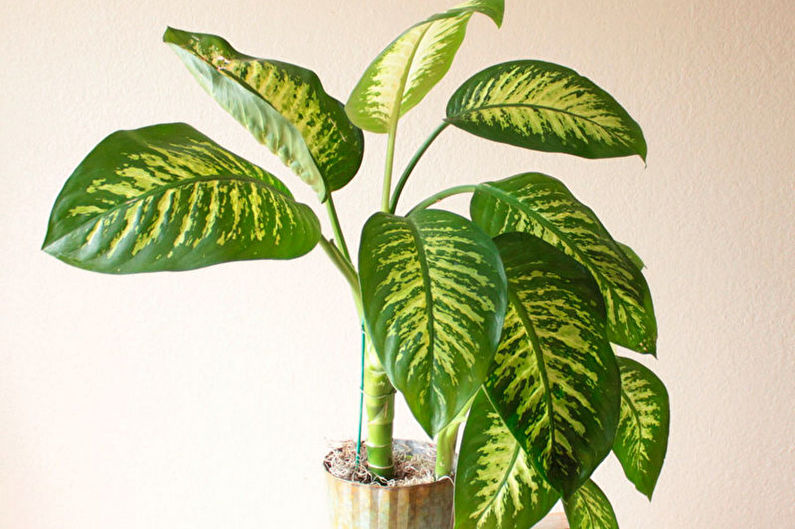

Transplantation and reproduction
A transplant is a great stress for Dieffenbachia, so all work must be done as carefully as possible. For young plants, the ideal option is in mid-April, once a year, by transshipment. Take a new pot, fill the bottom with a drainage layer and place the root of the flower in it. Water the plant and drain excess water from the pan in a few minutes. Over time, the root system will grow and strengthen.
There are several ways to propagate dieffenbachia:
Seeds Used only by professionals to develop new varieties or research. For home, this is too complicated and meaningless process.
Stem cuttings. Cut the bare trunk into parts with a knot in the middle and leave the stump up to 10 cm in the pot. Dry the cuttings for several days. Lay them horizontally with their buds up on moist peat with sand, cover with a film and leave at a temperature of about + 25C. In such a greenhouse, they will gradually take root. After that, transplant them into ordinary pots and into a substrate. If the remaining stump is moderately watered, he will soon give a new shoot and first leaves. Cut them and plant them in the soil for rooting.
Apical cuttings. The easiest way to “upgrade” an old plant with a bare trunk. Cut off the top, blot the slice, place it in water, moss or a moistened peat-sand mixture until the roots appear. Suitable temperature is + 20 ... + 25C. Spray the stalk with water and protect from direct sunlight. If the top is in the water, wait until the root grows 2-3 cm, and then transplant the stalk into a substrate.
Air layering. Dieffenbachia can be propagated according to the same principle as ficus. Make an incision on the stem, cover it with wet moss, wrap it with a dark film and fix it. After some time, roots will grow under it. Then cut off part of the stem with the roots, carefully remove the film and transplant layering into a substrate with moss.

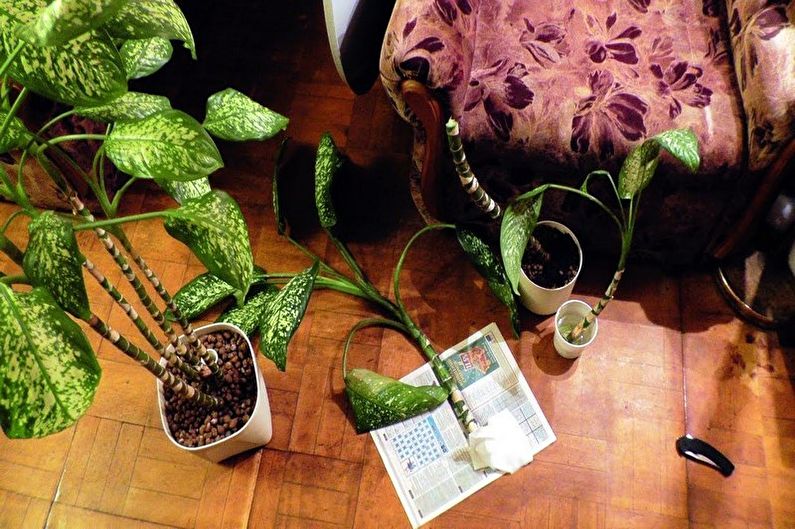

Pest and Disease Control
Of the insects, a tropical plant most often affects aphids, scale insects, spider mites, mealybugs and thrips. They need to be removed with a sponge and washed thoroughly with soap and water. For processing, akteplik solution is used.
Less commonly, dieffenbachia is susceptible to bacteriosis. Its symptoms are the appearance of well-defined, watery patches on the leaves.
With an excess of moisture, the root system begins to rot. This can be seen in the light gray coating. Replace the substrate as soon as possible, treat all with fungicide and reduce watering.
If the lower leaves turn yellow and fall, despite the correct conditions, this is a natural process. When the trunk becomes too bare, it’s time to rejuvenate Dieffenbachia by cuttings.
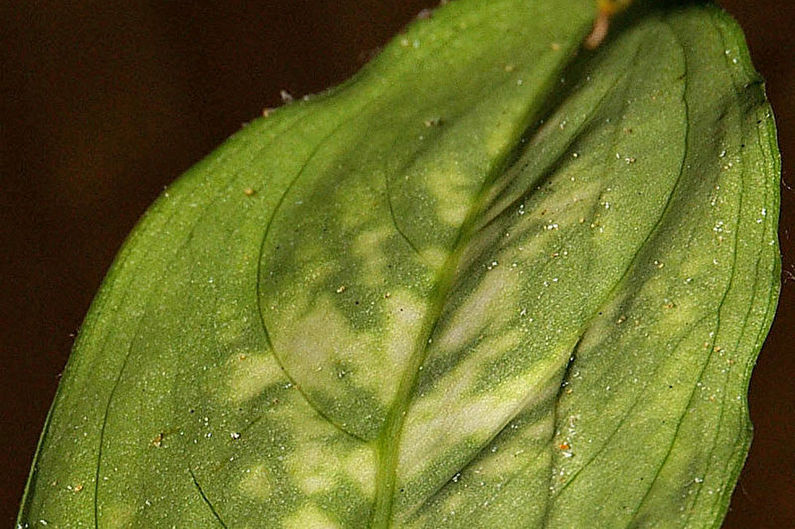
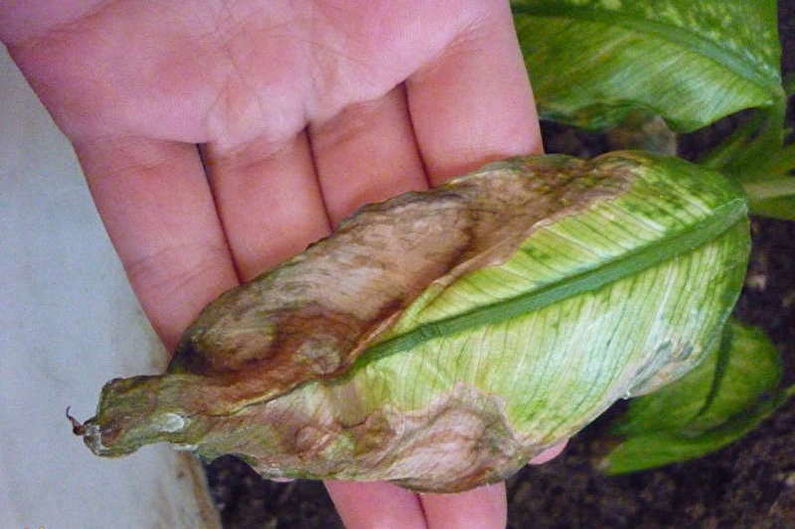
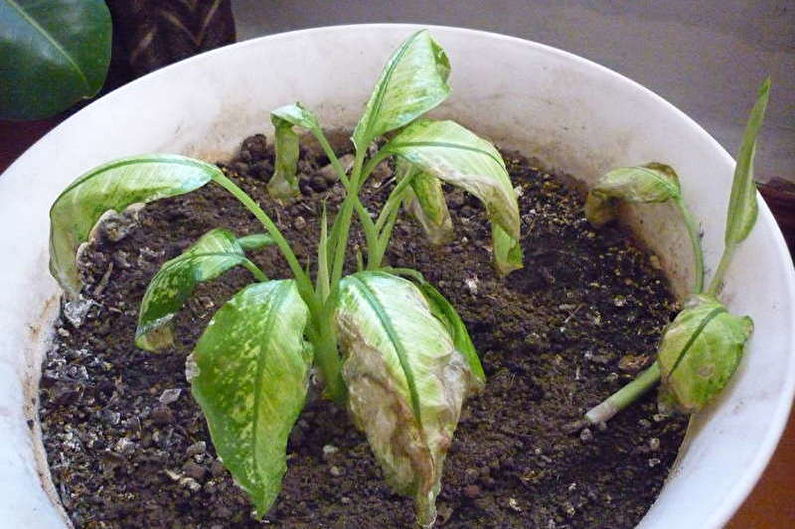
Dieffenbachia - photo
And to get even better to know how Dieffenbachia looks, check out our photo selection. We have selected the best photos so that you can navigate the choice and understand what you really need. Enjoy watching!
